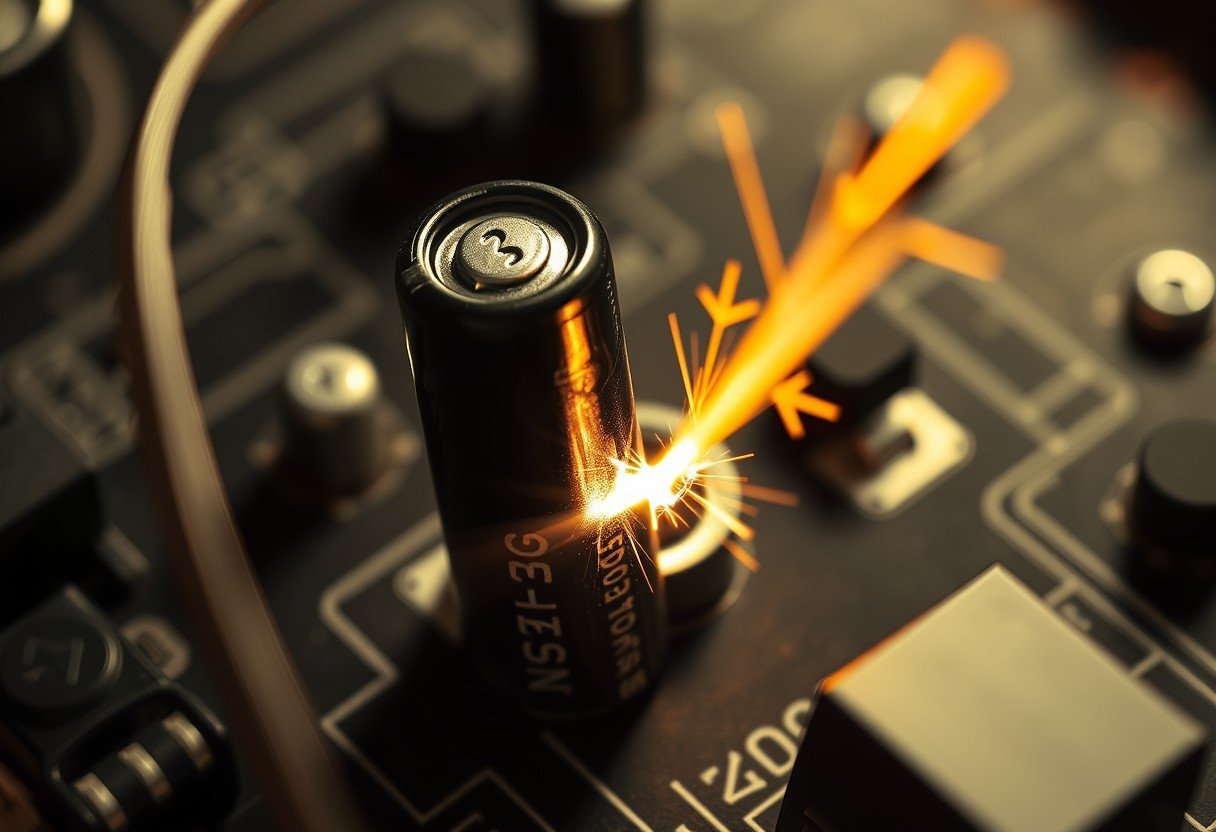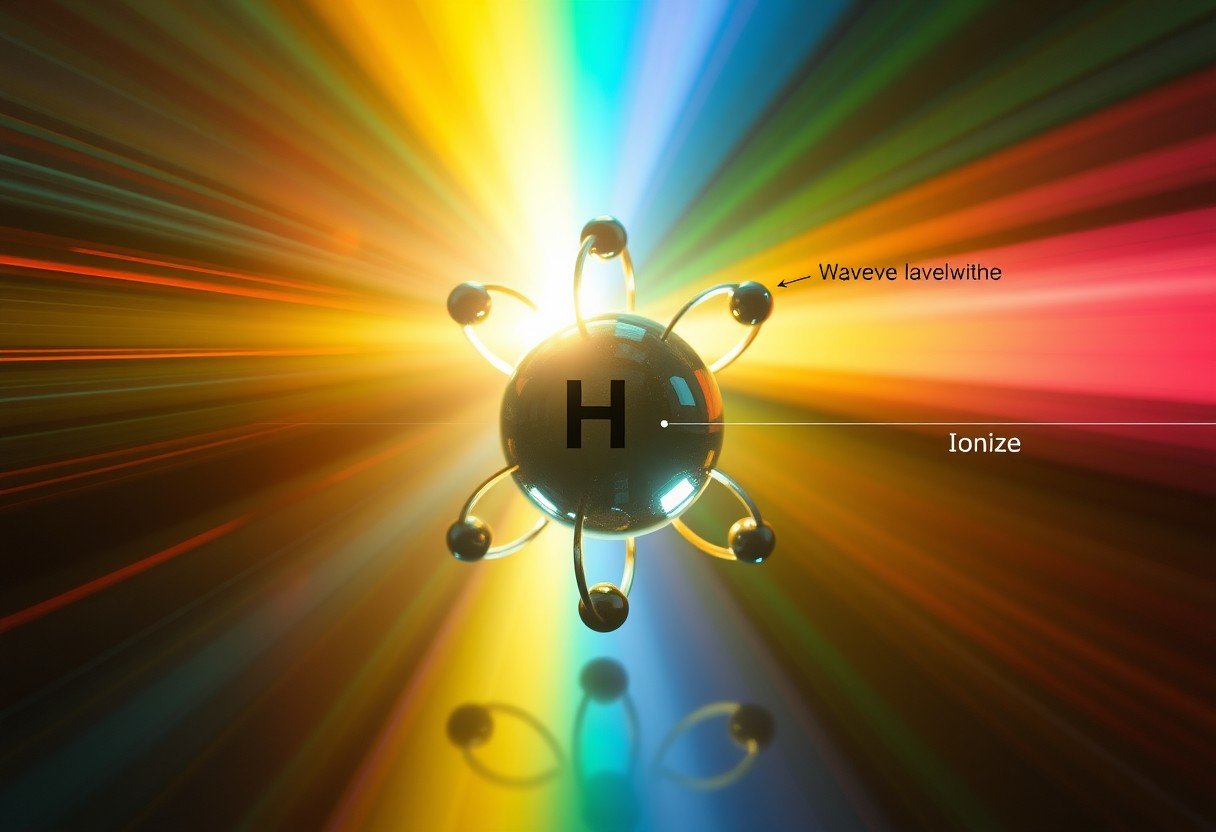When you flip a switch in a circuit containing a capacitor, its behavior isn’t always what you might expect. This simple action is key to understanding how many electronic devices work, from camera flashes to power supplies. The most important thing to know is that immediately after the switch is thrown, the charge stored on the capacitor remains the same as it was the moment before. This principle of charge conservation is fundamental to circuit analysis and design.
Why a Capacitor’s Charge Does Not Change Instantly
The primary reason a capacitor resists an immediate change in charge is due to its relationship with voltage. The charge (Q) on a capacitor is directly proportional to the voltage (V) across it, defined by the equation Q = C × V, where C is the capacitance.
For the charge to change in an instant, the voltage would also have to change instantaneously. However, an instantaneous change in voltage across a capacitor would require an infinite amount of current, which is physically impossible in a real-world circuit. This is a core principle of capacitor behavior.
Therefore, the voltage across a capacitor cannot change in zero time. Since the voltage remains constant for that split second, the charge on its plates must also remain constant at the moment the switch is thrown.
The Role of the Switch in a Capacitor Circuit
While often seen as a simple component, the switch is the trigger for all the action in the circuit. It acts as a gatekeeper, controlling the path for the current. When you throw a switch, you are either creating a new path for electricity to flow or breaking an existing one. This action dictates whether the capacitor will begin to charge, discharge, or hold its current state.
Different switches can affect how quickly and reliably this change occurs. Knowing the type of switch is helpful for understanding circuit behavior.
| Type of Switch | Description |
| Mechanical | Physically moves to connect or disconnect a circuit. |
| Electronic | Uses semiconductor devices like transistors to control current flow. |
| Toggle | Stays in one position until it is manually changed. |
When a switch closes, it completes the circuit, allowing current from a voltage source to flow to the capacitor, causing it to charge. When it opens, it stops the flow, and the capacitor holds onto its charge until a path for it to discharge is provided.
Initial Conditions Before the Switch is Flipped
The state of the capacitor just before you flip the switch is known as its initial condition. This starting point is crucial because it determines the entire circuit’s behavior immediately after the switch is thrown. The capacitor could be fully discharged with zero volts across it, or it could have been previously charged to a specific voltage level from another part of the circuit.
A capacitor’s previous history within the circuit dictates its initial charge and voltage. For instance, if a capacitor was charged to 5 volts in a previous state, it will still have 5 volts across it the instant the switch moves it to a new circuit configuration. This stored energy can cause a sudden surge of current, impacting other components.
Conversely, if the capacitor was uncharged (0 volts), it will initially act like a short circuit, allowing a large current to flow as it begins to charge. Predicting the circuit’s response requires knowing these initial conditions.
Understanding the Transient Phase After Switching
The period immediately following the switch being thrown is called the transient phase. While the charge and voltage are unchanged at the exact moment of switching (t=0), they begin to change immediately after. During this phase, the circuit is adjusting from its initial state to a new, stable condition.
This is when charge redistribution occurs. The stored energy in the capacitor begins to move through the new circuit path, causing currents to flow and voltages across other components to change.
- Current Flow: A transient current begins to flow as the capacitor starts to charge or discharge.
- Voltage Change: The voltage across the capacitor starts to change exponentially, not instantly.
- Reaching Equilibrium: The circuit gradually moves toward a new steady state, where the capacitor is either fully charged or fully discharged.
These temporary currents are vital for the operation of many circuits, such as timers that rely on the predictable time it takes for a capacitor to charge or discharge.
How Resistance and Capacitance Affect Charging Time
The speed at which a capacitor’s charge changes is not random. It is determined by two factors: the capacitance (C) of the capacitor and the total resistance (R) in the path through which it is charging or discharging.
This relationship is defined by a value known as the time constant, represented by the Greek letter tau (τ). The time constant is calculated by multiplying the resistance and capacitance: τ = R × C. A larger time constant means the capacitor will charge and discharge more slowly, while a smaller time constant results in a faster change.
For example, a circuit with a large resistor will limit the current flow, making the capacitor take longer to fill up with charge. This principle is fundamental in designing circuits where timing is critical, such as in filters or oscillators.
Energy Considerations During the Switching Process
Capacitors are energy storage devices. The amount of energy (E) stored in a capacitor is given by the formula E = ½CV². When a switch is thrown, this stored energy doesn’t just vanish; it is redistributed throughout the new circuit.
However, this redistribution process is not perfectly efficient. As the current flows through the circuit’s resistors (including the internal resistance of wires and components), some of the capacitor’s stored energy is converted into heat. This is an important energy loss that circuit designers must account for.
These energy losses are especially significant in high-frequency circuits where the switch is being flipped back and forth very rapidly. Managing this dissipated heat is crucial for ensuring the reliability and efficiency of the electronic device.
Frequently Asked Questions
What is a capacitor and what does it do?
A capacitor is an electronic component that stores electrical energy in an electric field. It is used in circuits for various purposes, including filtering out voltage spikes, storing energy for quick release, and in timing circuits.
Does the voltage across a capacitor change instantly when a switch is thrown?
No, the voltage across a capacitor cannot change instantaneously. It remains the same for a brief moment after the switch is thrown because an instant change would require an infinite current, which is not physically possible.
What determines how fast a capacitor charges or discharges?
The speed is determined by the circuit’s time constant (τ), which is the product of the resistance (R) and the capacitance (C). A larger resistance or capacitance results in a slower charge or discharge time.
Why is the initial charge on a capacitor important?
The initial charge determines the starting voltage of the capacitor. This value is critical for calculating how the circuit will behave immediately after a switch is thrown, including the direction and magnitude of the initial current flow.
What happens to the energy stored in a capacitor during switching?
The stored energy is redistributed into the new circuit. Some of this energy is delivered to other components, while some is lost as heat due to the resistance in the circuit’s path.








Leave a Comment